New HPLC Systems and Related Products Introduced at Pittcon 2014: A Brief Review
LCGC North America
Noteworthy new HPLC systems and related products
Noteworthy high performance liquid chromatography (HPLC) and related products introduced at Pittcon 2014 in Chicago, Illinois, and in the year prior are highlighted here. This installment summarizes the technical aspects of new HPLC systems, modules, and chromatographic software as well as other product extensions. Also included is a section on several new mass spectrometers, which are viewed as HPLC detectors. The focus of this review is on innovative products and new features that have potential impacts on HPLC practitioners.
The Pittsburgh Conference on Analytical Chemistry and Applied Spectroscopy (Pittcon) is the world's largest conference and exposition on laboratory science. This year Pittcon was held at McCormick Place in Chicago, Illinois, from March 2–6, 2014 (prior years held in Chicago were 2009 and 2007). Hosting Pittcon in Chicago makes plenty of sense because it is the third largest city in the United States and a major industrial center in the Midwest. It has many renowned restaurants and excellent deep-dish pizza. However, holding a conference in the "Windy City" in early March is not without risks. I recall that on my way to Pittcon 2007, O'Hare International Airport was closed minutes after my plane landed because of a small snow storm. Moreover, the flights of two of my invited speakers were turned back that same day.
Things were pretty tough this year with the coldest weather on record in decades. Temperatures hovered around single digits with many snow showers, sleet, or freezing rain during the conference week. Somehow, folks from all over the world still managed to make it there. Pittcon 2014 attracted more than 17,000 attendees from over 90 countries. There were more than 2000 technical papers, including those from plenary lectures, invited or contributed symposia, workshops, posters, networking sessions, 114 short courses, and an enormous exposition with more than 900 vendors from over 30 countries displaying at ~1900 booths. Note that more than 20% of the attendees and exhibitors are non-US-based, making Pittcon a truly international conference.
Recent Trends in HPLC Equipment
Pittcon 2014 happened to be another lean year for new high performance liquid chromatography (HPLC) system introductions because all major manufacturers already had ultrahigh-pressure liquid chromatography (UHPLC) offerings in prior years (1,2). The global HPLC equipment market continues to be dominated by several major manufacturers, leaving scant pickings for any new entrants. The high cost of sales and marketing as well as the difficulties in setting up global service support further discourage any newcomers to the competitive and mature market. Nevertheless, the HPLC market remained quite active this past year with 27 "new" items reported in this review.
Table I lists new HPLC product introductions (arranged alphabetically by vendor names) at Pittcon 2014 or during the prior year, followed by descriptions and commentaries on each product, categorized as systems, modules (including several new mass spectrometer offerings), data systems, software, and related products (capillary electrophoresis [CE] and supercritical fluid chromatography [SFC]).
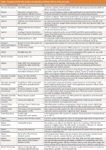
Table I: Summary of new HPLC product introductions at Pittcon 2014 or in the year prior
HPLC and UHPLC Systems and Line Extensions
Several product extensions or specialized applications systems were offered at Pittcon 2014 or in the prior year. These are explained in more detail below.
Agilent 1260 Infinity LC and LC–MS Purification systems — Synthetic chemists often use a rapid generic HPLC–mass spectrometry (MS) or UHPLC–MS method to confirm the successful synthesis of a target compound. Once confirmed, a family of newly configured analytical-to-prep purification systems from Agilent can allow the chemists to start the purification of the synthesized compounds (from milligram to gram quantities) immediately without any method optimization or scale-up calculations, which is handled completely by Agilent's new Automated Purification software. Each of Agilent's 1260 Infinity LC-based purification systems is equipped with an analytical- or preparative-scale module — a pump (flow rate of 0.001–100 mL/min), an autosampler (injection volumes up to 10 mL), and a fraction collector as well as various detector options such as Agilent's UV detector, evaporative light scattering detector, or 6100 MS system.
Agilent 1260 Infinity Bio-inert Multi-Detector size-exclusion chromatography system — This advanced size-exclusion chromatography (SEC) system is designed for the characterization and quality control of protein-based biopharmaceuticals such as monoclonal antibodies (mAbs). It features a titanium-based 1260 Infinity Bio-inert Quaternary LC system with nonmetallic sample flow paths (ceramic or PEEK) with a static or dynamic light scattering detector for on-line determination of absolute molecular weights. This system is ideally suited for the quantitation and characterization of intact proteins, fragments, monomers, dimers, aggregates, and potential degradants.
Eksigent microLC200 for LC–MS — Eksigent (now part of AB Sciex under Danaher Corporation) introduces the Ekspert microLC 200 system for LC–MS and LC–MS-MS analysis. It consists of a pneumatic pressure-controlled micropump with a flow-rate range of 5–200 μL/min (without flow splitting) and a dwell volume of 3 μL.
Shimadzu Nexera X2 UHPLC Method Scouting system — This is a rapid column and mobile-phase screening system designed for easy method scouting (development) by running up to 96 unique separation conditions (a combination of four A mobile phases (aqueous), four B mobile phases (organic solvents), and six different "orthogonal" columns. The system has an enhanced software package for system and work flow control. Figure 1 shows a schematic diagram of the Shimadzu Method Scouting System with the various HPLC modules and valving configurations for solvent and column selections. The system is ideal for automated column and mobile-phase screening and method optimization in laboratories specializing in HPLC method development.
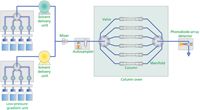
Figure 1: A schematic diagram of a Shimadzu Method Scouting System is shown here with details on specific modules and valving configuration. The system is designed for rapid column and mobile-phase scouting by the selection of four A mobile phases, four B mobile phases, and six columns with a total of up to 96 combinations.
Shimadzu Crude2Pure (C2P) Automated Purification/Powderization system — An add-on accessory to a Shimadzu preparative LC system that automates compound isolation based on an innovative "solid phase trapping (with polystyrene resin)" and evaporation process to allow for multisample recovery of purified solids (or highly concentrated solutions). The system includes enhanced software to visualize workflow and for system control.
Shimadzu UF-Amino Station to support automated amino acid analysis system by LC–MS — The UF-Amino Station automates precolumn derivatization using phenylthiocarbamyl chemistry (PTC) followed by LC–MS analysis of 38 amino acids found in food products with an analysis time of only 9 min. Quantitation of 25 amino acids in 15 min is possible using UV detection. This compares favorably with the traditional method using ion-exchange chromatography with ninhydrin post-column reaction, which requires an analysis time of over 120 min.
Shimadzu Nexera Square system — Nexera-based LC×LC and LC×LC–MS systems that provide higher peak capacities through two-dimensional (2D) "orthogonal" separations of complex samples using either heart-cut or comprehensive mode. Instructive software is available for system control and qualitative or quantitative analysis.
Tosoh Bioscience EcoSEC High Temperature GPC system — This third-generation Tosoh high-temperature gel-permeation chromatography (GPC) system is intended for polymer characterization and is capable of precise determination of molecular weight averages and distributions and polydispersity of polyolefin and other organic polymers at column temperatures up to 220 °C. It is equipped with a dual-flow-cell refractive index detector, a preparative sample module, and a new line of high-temperature GPC columns.
Waters Patrol UPLC Pilot Process Analysis system — This is a new addition to the Waters family of at-line and on-line UPLC process analysis systems. Intended for use by analytical scientists supporting process development; it consists of a process sample manager and an Acquity UPLC system that automates sample extraction from a reactor, sample dilution, analysis and reporting, and communication to a laboratory information management system (LIMS) or distributed control system (DCS). The system is useful for real-time quantitative in-process monitoring and facilitates control of chemical reactions, fermentation, or bioprocessing.
Waters Acquity UPLC M-Class System — A UHPLC system that is designed for nano- to microscale separations using UV and MS detection for samples of limited availability. The system uses columns with internal diameters ranging from 75 μm to 1.0 mm packed with sub-2-μm materials, and operates at flow rates of 200 nL/min to 100 μL/min, and pressures of up to 15,000 psi. The system is ideally suited for proteomics, biomarker analysis, metabolic profiling, 2D separations, metabolite identification, and pharmacokinetic studies. The system is compatible with the company's new ionKey, a microfluidic device for direct coupling to a Waters Xevo TQ-S MS (and eventually to other MS platforms). The ionKey device contains a 150-μm i.d. channel (column), an electrospray ionization (ESI) interface, a heater, and all built-in connections.
HPLC Modules
Several new modules introduced this year are stand-alone UHPLC-compatible detectors for the analysis of nonchromophoric compounds. These are explained in detail below.
Sedex 90LT low-temperature evaporative light-scattering detector — This detector provides sensitive detection (very low nanogram) and gives a near-universal response for low- or non-chromophoric, nonvolatile, or semivolatile compounds. This unit uses an improved low-temperature nebulizer technology coupled to a new optical design to provide higher sensitivity (fivefold improvement compared to prior models) and better linearity (four orders of magnitude). It is compatible with UHPLC and supercritical fluid chromatography (SFC). Figure 2 shows overlaid chromatograms of the new model S90 versus that of the existing S85 detector on a caffeine solution showing a threefold increase in sensitivity.
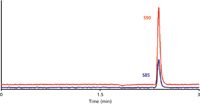
Figure 2: Overlaid chromatograms of injections of a dilute caffeine solution (10 μL of 8 ppm) using the Sedex S90 (S/N = 143, LOD = 1.7 ng) and Sedex S85 evaporative light scattering detectors. Column: 150 mm à 4.6 mm, 5-μm dp Zorbax Eclipse XDB-C18; mobile phase: 80:20 waterâacetonitrile; flow rate: 1.0 mL/min; column temperature: 20 °C; detector temperature: 40 °C.
Wyatt μDawn multiangle light scattering (MALS) detector — This is the world's first UHPLC-compatible multiangle light scatting detector that is designed for absolute molecular weight determinations of polymers, peptides, proteins, biotherapeutics, quantum dots, and gold sols. The detector removes the need for column calibration and reference standards and has a much smaller flow cell (<10 μL versus 63 μL from a previous model) for better compatibility with smaller UHPLC columns. This detector is complementary to the Optilab UT-rEX refractive index (RI) detector that was introduced in 2013.
Thermo Scientific Corona Veo Detector — The new Corona aerosol detector improves detection sensitivity by fivefold with a newly designed nebulizer. Other enhancements include easier front access to fluidic connections, exchangeable FocusJet nebulizer, electronic gas flow control, and the elimination of pressurized waste bottle because of the use of a new active drain pump.
EXCELLIMS IA3100 HPLC-HPIMS — The IA3100 ion mobility spectrometer can be added on to any HPLC system to provide 2D orthogonal separations of complex samples and isomers. This ion mobility spectrometer contains a splitter to provide flow of 2–10 μL/min to an electrospray ionization source that ionizes analytes separated by the HPLC, a drift tube containing a collision gas that provides an orthogonal separation mode based on molecular size and shape, and a Faraday plate detector.
Mass Spectrometers
MS has made significant impacts to scientific discoveries. Three new products are highlighted in this section because a mass spectrometer is often viewed as a HPLC detector. There appears to be two significant recent trends in MS equipment. First is the development of low-cost, highly portable single-quadrupole MS system, which allows the equipment to be used by nonspecialists for LC–MS, supporting flash purification and on-line reaction monitoring (3). A compact mass spectrometer, the 4000 MiD from Microsaic Systems (a chip-based MS) was introduced at Pittcon 2013. Second is the trend towards hybrid or tribrid high-resolution accurate mass MS, which provides an ideal tool for solving the most complex problems.
Advion Expression Compact mass spectrometer (Model S and L) — Advion, cofounded by Professor Jack Henion of Cornell University, is a major contract research organization (CRO) in bioanalytical testing. Advion introduced the Expression Compact mass spectrometer in 2011, targeting at-line, in-process reaction monitoring or target compound purification in synthetic organic chemistry laboratories. Two new compact single-quadrupole MS models CMS-S and CMS-L now support higher flow rates (up to 2 mL/min), scan rates (10,000 amu/s), and mass range (10–2000 amu).
Waters Acquity QDa detector — The Acquity QDa detector can operate without a roughing pump, and can work reasonable well using an integrated dry diaphragm pump. It is very compact (the size of a UV detector), has a mass range of 30–1250 amu with a scan rate of 10,000 amu/s, and is UHPLC- and SFC-compatible. The electrospray ionization (ESI) sensitivity is similar to those of other single-quadrupole mass spectrometers when operated with a roughing vacuum pump and is about fivefold less sensitive when used with the integrated diaphragm pump alone. Control and data display is through Waters Empower 2 FR5 to 3 or MassLynx 4.1.
Thermo Scientific Orbitrap Fusion MS — The development of the Orbitrap analyzer has been a story of luck, perseverance, occasional deep insights, and ultimate success. Within just a few years, this technology has virtually displaced Fourier transform ion cyclotron resonance (FT-ICR) as the benchmark for high-resolution accurate-mass MS. The Orbitrap Fusion MS system combines the best of quadrupole, orbital trap, and linear ion trap mass analyzers in a tribrid architecture that delivers excellent depth of analysis. It is capable of multiple fragmentation techniques (collision induced dissociation [CID], high-energy C-trap dissociation [HCD], and energy transfer dissociation, [ETD]), and a mass accuracy of <1 ppm with an impressive resolving power of up to 450,000 full width at half maximum (FWHM). This enables researchers in life sciences to analyze the most challenging low-abundance, high-complexity samples by allowing for effective identification, quantitation, and structure elucidation. Figure 3 shows the schematic diagram of the system's ion path.
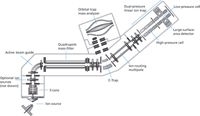
Figure 3: A schematic diagram of the ion path of the new Thermo Scientific Orbitrap Fusion mass spectrometer - a tribrid consisting of a quadrupole, an orbital trap mass analyzer, and a linear ion trap.
Chromatography Data System
A chromatography data system (CDS) can be a standalone computer or a client-server based network. CDS typically also functions as a single-point system control in addition to data handling (peak integration, report generation, and data archival).
Waters Empower 3, Feature Release 2 — Waters Empower 3, introduced in 2010, is a leading chromatography data system, with a dominant position in client–server based networks. The current release supports 2D-LC, SFC, Acquity QDa detector, single-quadrupole MS, and triple-quadrupole MS systems. It has enhanced connectivity to other vendors' chromatographic systems (HPLC, UHPLC, gas chromatography, ion chromatography, and SFC). This version offers an improved user interface for mass spectral data processing and display. It provides better support for pharmaceutical testing by allowing automatic identification of peaks (as impurity, degradant excipient), flagging of "out-of-specification" results, and naming unknowns as relative retention time (RRT) tags — all without the use of custom fields. Additional capabilities, such as allowing lab managers or users to monitor status or user and system usage, perform routine system administration, and review and sign off on reports, are available through regular network or wireless access from a tablet or smart phone. It now supports operation systems such as Linux Red Hat, Oracle Solaris, and Windows for network servers. Figure 4 is a screen capture of Empower 3 (FR 2) showing the simultaneous display of chromatographic and UV and MS spectral data.
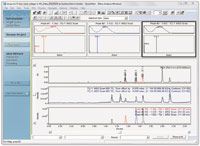
Figure 4: A screen shot of Waters Empower 3 Feature Release 2 showing the simultaneous display of chromatographic and UV and MS spectral data.
Thermo Scientific Chromeleon 7.2 SR1 — This new release provides enhanced support for MS on Enterprise Environments, TSQ Quantiva/Endura, Q Exactive and Exactive Series, and MSQ for routine quantitative applications. It closes gaps of fraction collection, autodilution, and MSQ support from Chromeleon 6.8 and provides more "right-first-time" analysis by combining Chromeleon eWorkflows and Intelligent Run Control for more automated analysis including running samples right away using "one-click work flows."
HPLC Method Development and Other Software
Automated HPLC method development software has seen significant improvements in the last decade, facilitating tasks such as column and mobile-phase screening, method optimization and validation, and robustness assessment (4–7). Some newer releases of method development and other HPLC-related software are summarized here.
ACD AutoChrom Method Development software v. 2012 — This software provides a complete automated method development capability for Waters and Agilent HPLC and UHPLC systems. It uses both automated experimental designs and predictive simulation in addition to sophisticated peak tracking functions using UV or MS data and an improved user interface. This latest release also integrates with the ACD/Spectrus database platform (5).
Molnár Institute DryLab 2010 v. 4.2 — DryLab, a predictive and visual modeling software, pioneered a modern software-assisted approach to HPLC method development. It was first introduced in 1986 by Snyder, Dolan, and Molnár (4). DryLab v. 4.2 offers simultaneous optimization of three measured critical parameters, resulting in a useful three-dimensional (3D) cube data display, a new peak tracking tool (Peak Match), as well as a robustness calculation module, and a knowledge management protocol documenting method development strategies (6). The software is compatible with the Windows operating system (from XP to Windows 8).
S-Matrix Fusion AE QbD LC Method Development Software v. 9.7.0 — Over the last 10 years S-Matrix Corporation, a company specializing in design of experiments (DoE) software, has adapted its DoE and advanced modeling software to LC method development based on the principles of quality by design (QbD) (7). The latest release offers a multiparameter design space and proven acceptable range (PAR) graphics (from the International Conference on Harmonisation Guidance, ICH Q8(R2)) integrated with its Monte Carlo robustness simulation engines, and extends its automated LC experimentation capabilities to include all Waters and Agilent UHPLC systems under Empower and all Agilent UHPLC systems under ChemStation/OpenLab. This release also adds a full suite of automated validation experiments for both small and large molecule samples to its companion LC Method Validation module.
Agilent Intelligent System Emulation Technology (ISET), third release — ISET facilitates methods transfer from many UHPLC and HPLC platforms to the 1290 Infinity LC system to achieve the same chromatographic results without any change to the original method. This third release now also supports the 1290 Infinity Quaternary pump and allows emulation of additional Waters and Shimadzu UHPLC and HPLC systems.
Agilent Maintenance Wizard — The Agilent Maintenance Wizard is an add-on software module to Agilent's Lab Advisor, which enables "do it yourself" customers and self-maintainers to effectively perform maintenance on Agilent UHPLC and HPLC systems. The software guides users through the complete process of instrument maintenance, including assembly and disassembly, cleaning, parts exchange, and testing by an intuitive, structured, and easy to use wizard-like walk through. Descriptive and visualized instructions (such as animated PDFs and videos) help users every step of the way and provide accurate documentation of performed maintenance actions. Figure 5 shows a screen capture of the maintenance wizard with details of system configuration and a link to a maintenance video.
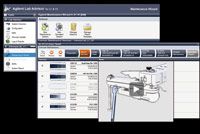
Figure 5: A screen shot of Agilent’s Maintenance Wizard showing details of the various modules in the HPLC system and a link to a video illustrating a maintenance procedure to the user.
Other New Separation Systems
HPLC-related products discussed here include new production introductions of capillary electrophoresis (CE) and supercritical fluid chromatography (SFC).
AB Sciex's CESI 8000 system for biologics characterization — This system is the first CE-related product launch from AB Sciex (AB Sciex separations business unit now combines Beckman Coulter's CE products and Eksigent's nano LC and micro LC systems). The system combines CE with electrospray ionization (ESI) for MS through a dynamic process in a single device (a porous tip design that allows ESI current to pull the analytes into the MS at very low flow, ~20 nL/min). The system is useful for the detailed CE–MS characterization of biologics and their digests (for analysis of identity, purity, heterogeneity, and stability).
JASCO PR-2088 Prep SFC — This SFC system is designed for use with 10-, 21-, or 30-mm i.d. columns for semipreparative to large-scale sample preparation and purification (hundreds of milligrams to tens of grams scale). It allows carbon dioxide delivery of up to 120 mL/min and supports interchangeable modifier pumps and various detection options (UV–vis, photodiode array, and circular dichroism). The company's SF-Nav software provides complete integrated control for flow rate, sample injection, and fractionation.
Personal Concluding Remarks
Many analytical chemists, including myself, come to Pittcon for professional and personal reasons. My schedule this year (my 15th consecutive year) included giving a two-day HPLC and UHPLC short course, attending the plenary lecture by Dr. Steven Carr on proteomics and Professor Mary Wirth's Dal Nogare Award address (on the separation of monoclonal antibodies using 0.5-μm colloidal particles), and chairing an invited symposium on quality control of biopharmaceuticals. My networking events included LCGC's advisory board lunch (with the LCGC staff and more than 15 other board members), the Chinese American Chromatography Association (CACA) dinner event with 140 attendees (featuring a speech on portable HPLC by Professor Milton Lee of Brigham Young University), and the annual Pittcon presidential reception. I spent two days on the exposition floor, gathering confirmatory information for this article and witnessing first-hand, the newest trends in analytical instrumentation through the myriad innovative products on display. Every year at Pittcon, I personally witness the development of emergent analytical sciences and trends in instrumentation, as well as reacquaint myself with old colleagues and meet new friends. Somehow, Pittcon never fails to inspire us with new ideas as we return home with tired feet, but renewed vigor to continue on with our respective journeys in analytical chemistry. We all look forward to warmer weather and a festive post-Mardi Gras Pittcon 2015 in New Orleans, Louisiana.
Summary
This review summarizes new HPLC product introductions (systems, modules, CDS, software, and related products) at Pittcon 2014 and in the prior year. It highlights innovative features of these new products from a user's perspective. Readers should refer directly to the manufacturers' sources for technical details and product specifications. My goal is to provide a summary and update of innovative HPLC products relevant to our readership, particularly to those who missed Pittcon this year. Note that new HPLC columns introduced at Pittcon are covered by Ron Majors's annual review (8,9). This year's coverage by Majors will appear in the April and the May issues.
The opinions expressed in this brief review are the author's own and bear no reflections on those from LCGC North America, the Pittcon Conference, or any other organizations.
Acknowledgments
I would like to give my heartfelt thanks to the permanent staff and voluntary committee members of Pittcon for their tireless efforts in organizing one of the most well-organized conferences year after year where everything runs like clockwork (from shuttle buses to symposia). The author offers a word of thanks to the marketing staffs of all the instrument manufacturers who provided timely responses to the LCGC questionnaires and to my numerous e-mail solicitations for information. The author is grateful to Drs. Davy Guillarme and Szabolcs Fekete of the University of Geneva, Drs. Dawen Kou and Sam Yang of Genentech, and Dr. Tom Waeghe of Mac-Mod Analytical for providing useful input and comments.
References
(1) D. Guillarme and M.W. Dong, Amer. Pharm. Rev. 16(4), 36–43 (2013).
(2) M.W. Dong, LCGC North Am. 31(4), 316–325 (2013).
(3) X. Bu, J. Yang, X. Gong, and C.J. Welch, J. Pharm. Biomed. Anal. 94, 139–144 (2014).
(4) L.R. Snyder, LCGC North Am. 30(4), 328–341 (2012).
(5) J.D. Stafford, T.D. Maloney, D.P. Myers, J.M. Cintron, and B.C. Castle, J. Pharm. Biomed. Anal. 56, 280–292 (2011).
(6) A.H. Schmidt and I. Molnar, J. Pharm. Biomed. Anal. 78–79, 65–74 (2013).
(7) B. Debrus, D. Guillarme, and S. Rudaz, J. Pharm. Biomed. Anal. 84, 215–223 (2013).
(8) R.E. Majors, LCGC North Am. 31(4), 280–298 (2013).
(9) R.E. Majors, LCGC North Am. 31(5), 364–381 (2013).
Michael W. Dong is a senior scientist in Small Molecule Drug Discovery at Genentech in South San Francisco, California. He is responsible for new technologies, automation, and supporting late-stage research projects in small molecule analytical chemistry and QC of small molecule pharmaceutical sciences. He holds a PhD in analytical chemistry from the City University of New York and a certificate in Biotechnology from U.C. Santa Cruz. He has conducted numerous courses on HPLC/UHPLC, pharmaceutical analysis, HPLC method development, drug development process, and drug quality fundamentals. He is the author of Modern HPLC for Practicing Scientists and a co-editor of Handbook of Pharmaceutical Analysis by HPLC. He is a member of the editorial advisory board of LCGC.

Michael W. Dong
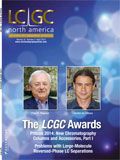
















Altering Capillary Gas Chromatography Systems Using Silicon Pneumatic Microvalves
May 5th 2025Many multi-column gas chromatography systems use two-position multi-port switching valves, which can suffer from delays in valve switching. Shimadzu researchers aimed to create a new sampling and switching module for these systems.
Characterizing Polyamides Using Reversed-Phase Liquid Chromatography
May 5th 2025Polyamides can be difficult to characterize, despite their use in various aspects of everyday life. Vrije Universiteit Amsterdam researchers hoped to address this using a reversed-phase liquid chromatography (RPLC)-based approach.
New Method Explored for the Detection of CECs in Crops Irrigated with Contaminated Water
April 30th 2025This new study presents a validated QuEChERS–LC-MS/MS method for detecting eight persistent, mobile, and toxic substances in escarole, tomatoes, and tomato leaves irrigated with contaminated water.
University of Tasmania Researchers Explore Haloacetic Acid Determiniation in Water with capLC–MS
April 29th 2025Haloacetic acid detection has become important when analyzing drinking and swimming pool water. University of Tasmania researchers have begun applying capillary liquid chromatography as a means of detecting these substances.
Altering Capillary Gas Chromatography Systems Using Silicon Pneumatic Microvalves
May 5th 2025Many multi-column gas chromatography systems use two-position multi-port switching valves, which can suffer from delays in valve switching. Shimadzu researchers aimed to create a new sampling and switching module for these systems.
Characterizing Polyamides Using Reversed-Phase Liquid Chromatography
May 5th 2025Polyamides can be difficult to characterize, despite their use in various aspects of everyday life. Vrije Universiteit Amsterdam researchers hoped to address this using a reversed-phase liquid chromatography (RPLC)-based approach.
New Method Explored for the Detection of CECs in Crops Irrigated with Contaminated Water
April 30th 2025This new study presents a validated QuEChERS–LC-MS/MS method for detecting eight persistent, mobile, and toxic substances in escarole, tomatoes, and tomato leaves irrigated with contaminated water.
University of Tasmania Researchers Explore Haloacetic Acid Determiniation in Water with capLC–MS
April 29th 2025Haloacetic acid detection has become important when analyzing drinking and swimming pool water. University of Tasmania researchers have begun applying capillary liquid chromatography as a means of detecting these substances.
2 Commerce Drive
Cranbury, NJ 08512

.png&w=3840&q=75)

.png&w=3840&q=75)



.png&w=3840&q=75)



.png&w=3840&q=75)